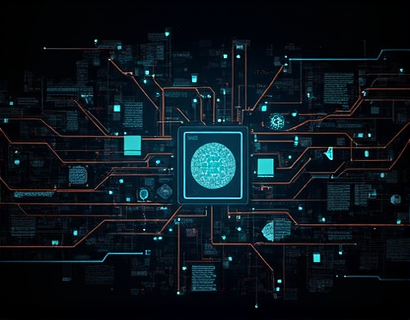AI-Driven Mental Health Insights: A Comprehensive and Safe Chatbot for All
The integration of artificial intelligence in mental health services has opened new avenues for providing accurate, safe, and accessible information to a diverse audience. This article delves into the development and functionality of an AI-driven chatbot designed to offer specialized insights into mental health services and industry trends. The chatbot is tailored to meet the needs of professionals, students, mental health enthusiasts, educators, parents, and children, ensuring content verification for all ages.
Understanding the Need for AI in Mental Health
The mental health landscape is complex and ever-evolving, with new research, treatments, and industry standards emerging regularly. The demand for reliable and up-to-date information is critical, especially for those seeking guidance on mental health services. Traditional methods of disseminating this information, such as books, academic journals, and professional networks, often fall short in terms of accessibility and timeliness. An AI-driven chatbot addresses these gaps by providing real-time, accurate, and personalized insights to users across various demographics.
Designing for a Diverse Audience
The chatbot is engineered to cater to a wide range of users, from children and students to healthcare professionals and mental health enthusiasts. Each group has unique information needs and levels of understanding, which the chatbot addresses through adaptive content delivery. For children and students, the chatbot uses simplified language and engaging visuals to explain mental health concepts and resources. For professionals and enthusiasts, it provides in-depth analysis, industry trends, and advanced therapeutic techniques.
Content Verification and Safety
Ensuring the accuracy and safety of the information provided is paramount. The chatbot incorporates a robust content verification system that cross-references data from credible sources, including peer-reviewed journals, official health organizations, and expert opinions. This multi-layered verification process minimizes the risk of misinformation and ensures that users receive reliable and trustworthy content. For children and students, the chatbot adheres to strict guidelines to maintain a safe and appropriate environment, filtering out any potentially harmful or inappropriate content.
Interactive and Engaging User Experience
The chatbot is designed to be interactive and user-friendly, leveraging natural language processing (NLP) to understand and respond to user queries effectively. Users can engage in conversations, ask questions, and receive detailed answers in a conversational format. The chatbot uses a friendly and approachable tone, making the interaction feel less like a formal consultation and more like a supportive dialogue. This approach helps build trust and encourages users to seek help and learn more about mental health topics.
Specialized Information for Professionals
For healthcare professionals, the chatbot offers a wealth of specialized information. This includes the latest research findings, treatment protocols, and industry trends. Professionals can access detailed case studies, therapeutic techniques, and best practices in mental health care. The chatbot also provides resources for continuing education, such as webinars, workshops, and online courses. By keeping professionals updated on the latest developments, the chatbot helps them deliver the highest standard of care to their patients.
Resources for Students and Enthusiasts
Students and mental health enthusiasts can benefit from the chatbot's educational content, which covers a broad range of topics from basic mental health concepts to advanced psychological theories. The chatbot provides links to relevant articles, books, and online resources, facilitating further learning. For students, the chatbot can answer questions about mental health in an educational context, helping them understand the importance of mental well-being and how to support themselves and others. Enthusiasts can explore deeper topics and stay informed about the latest research and discussions in the field.
Support for Educators and Parents
Educators and parents play a crucial role in promoting mental health awareness and support. The chatbot offers guidance on how to recognize signs of mental health issues in children and adolescents, as well as strategies for providing support and encouraging help-seeking behavior. It provides resources for creating supportive school environments and engaging in open conversations about mental health. For parents, the chatbot offers tips on fostering a positive home environment and addressing common mental health concerns.
Child-Friendly Content and Safety Measures
For children and students, the chatbot includes a specialized mode that ensures content is age-appropriate and safe. The chatbot uses simplified language, engaging illustrations, and interactive elements to make learning about mental health enjoyable and accessible. Safety measures are in place to monitor and filter interactions, preventing any exposure to inappropriate or harmful content. Parents and educators can also use the chatbot as a tool to initiate discussions about mental health with children, providing them with the knowledge and confidence to seek help when needed.
Building Trust Through Transparency
Transparency is a cornerstone of the chatbot's design. Users are informed about the sources of the information provided, ensuring they can verify the credibility of the content. The chatbot clearly indicates when it is providing general information, expert opinions, or direct quotes from research studies. This transparency builds trust and helps users make informed decisions about their mental health and the resources they use.
Personalized Recommendations and Support
The chatbot uses advanced algorithms to analyze user queries and provide personalized recommendations based on their specific needs and context. For instance, a user seeking information about anxiety management might receive a tailored list of coping strategies, local support groups, and relevant articles. For professionals, the chatbot can suggest tailored therapeutic approaches based on the user's specialization and the specific case they are dealing with. This personalized approach enhances the relevance and utility of the information provided.
Integration with Mental Health Services
The chatbot serves as a gateway to mental health services, connecting users with professional resources and support networks. It provides information on finding therapists, counseling services, and mental health clinics. Users can filter search results based on location, specialization, and insurance coverage, making it easier to access the help they need. The chatbot also offers guidance on how to prepare for initial consultations and what to expect from different types of mental health services.
Continuous Improvement and User Feedback
The chatbot's effectiveness is continually enhanced through user feedback and data analysis. Users can provide feedback on the accuracy and usefulness of the information received, which is used to refine and improve the chatbot's performance. The development team regularly updates the chatbot's algorithms and content library to incorporate new research and industry insights, ensuring that the information remains current and relevant.
Conclusion
The AI-driven chatbot represents a significant advancement in providing accessible, accurate, and safe mental health information to a diverse audience. By addressing the unique needs of professionals, students, educators, parents, and children, the chatbot fosters a more informed and supportive community. Through its commitment to content verification, user engagement, and personalized support, the chatbot empowers individuals to take proactive steps towards better mental health and well-being.










































